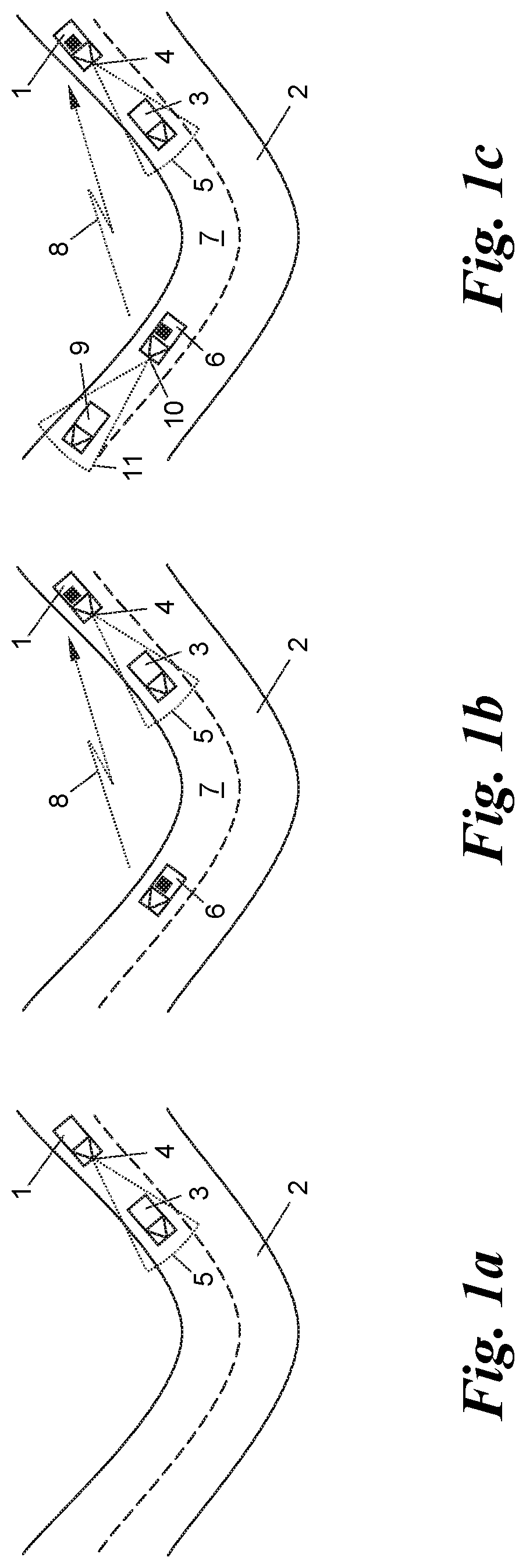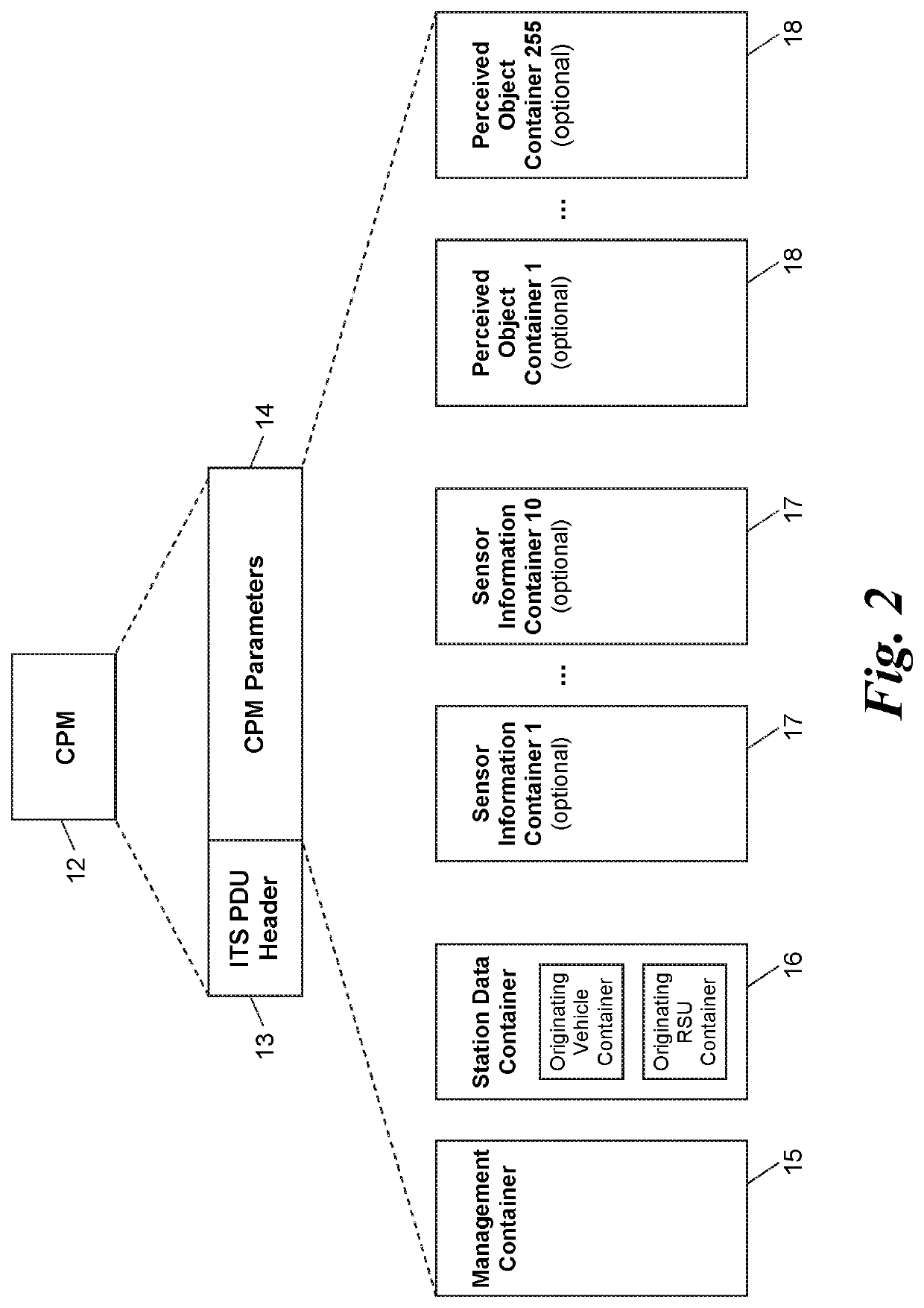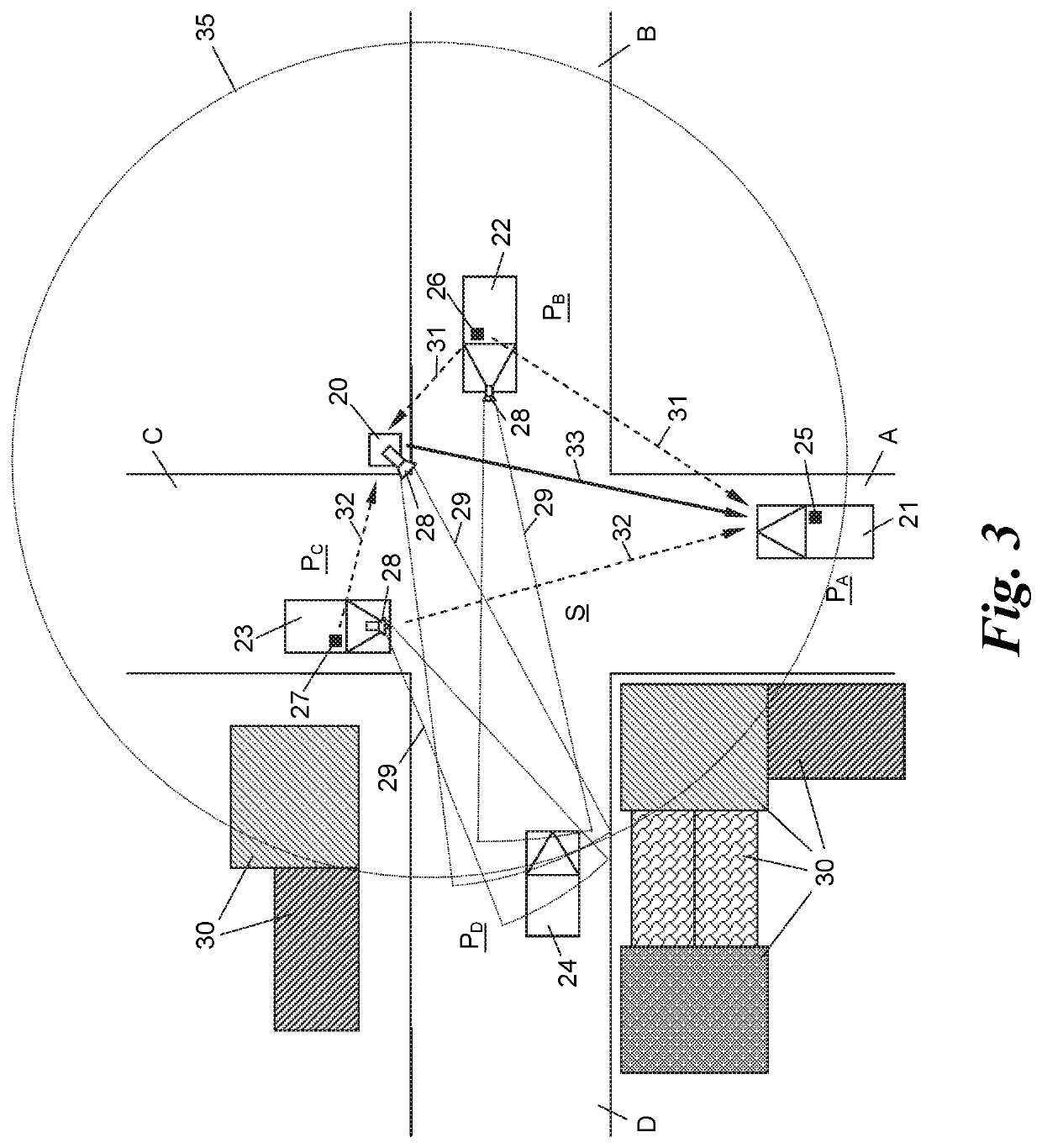Service station for an intelligent transportation system
a technology of intelligent transportation and service station, applied in the direction of traffic control system, transportation and packaging, instruments, etc., can solve the problems of increasing costs and needing higher processing power, and achieve the effect of speeding up processing and high confidence measures
- Summary
- Abstract
- Description
- Claims
- Application Information
AI Technical Summary
Benefits of technology
Problems solved by technology
Method used
Image
Examples
Embodiment Construction
[0035]FIGS. 1 and 2 referring to the CPS in ITS and the CPM data structure, respectively, have been explained at outset.
[0036]FIG. 3 shows an ITS service station 20 mounted stationarily as a roadside unit (RSU) at one of the corners of an intersection S between four roads A, B, C, D. Four exemplary vehicles 21-24 are shown approaching or just about to enter the intersection S. The positions of the vehicles 21-24 on the roads A-D are designated as PA, PB, PC and PD, respectively.
[0037]The vehicles 21-23 each carry an ITS-S 25-27 in the form of an onboard unit (OBU). Vehicles 22, 23 are exemplarily equipped with a sensor 28 with a respective field of view 29, capable of perceiving an object (here: the fourth vehicle 24). The sensors 28 may be of any kind, e.g., a camera, a radar or lidar sensor, an acoustic sensor, a vibration sensor, an infrared sensor etc. The ITS service station 20, too, may have an own sensor 28 to perceive objects 24 in its vicinity, although this is not obligato...
PUM
 Login to View More
Login to View More Abstract
Description
Claims
Application Information
 Login to View More
Login to View More - R&D
- Intellectual Property
- Life Sciences
- Materials
- Tech Scout
- Unparalleled Data Quality
- Higher Quality Content
- 60% Fewer Hallucinations
Browse by: Latest US Patents, China's latest patents, Technical Efficacy Thesaurus, Application Domain, Technology Topic, Popular Technical Reports.
© 2025 PatSnap. All rights reserved.Legal|Privacy policy|Modern Slavery Act Transparency Statement|Sitemap|About US| Contact US: help@patsnap.com



